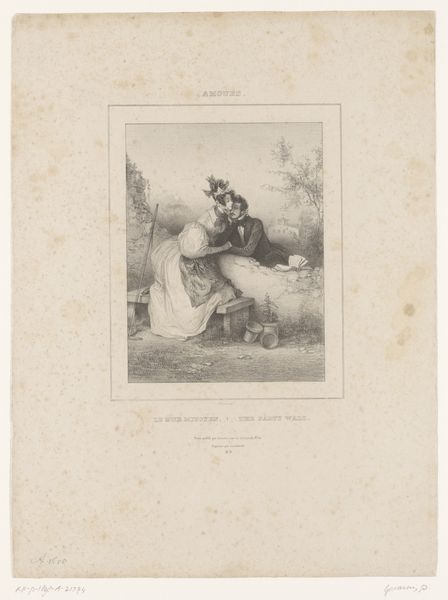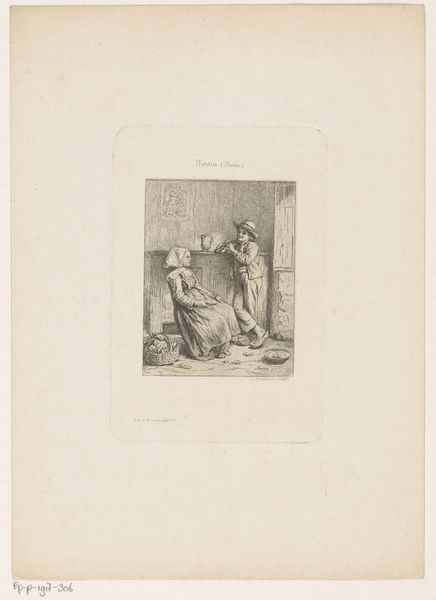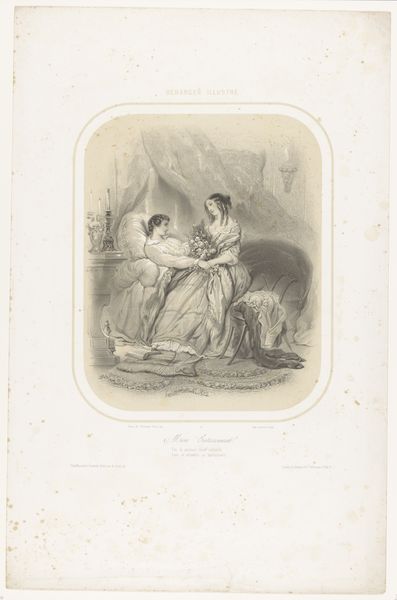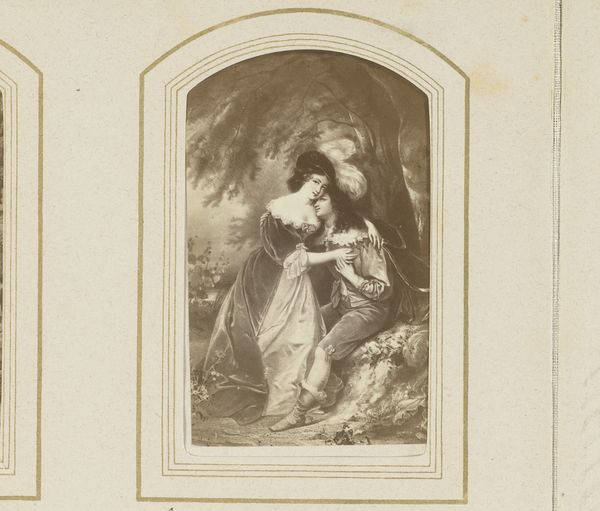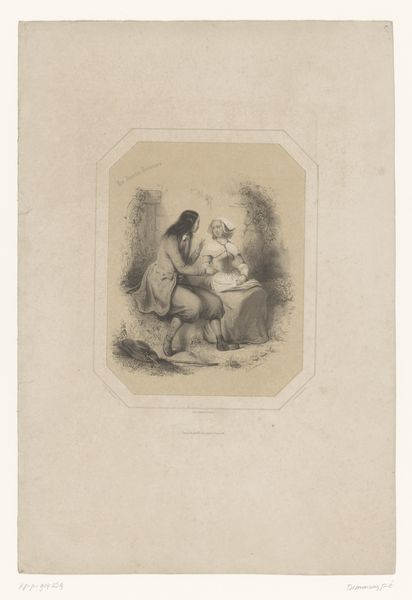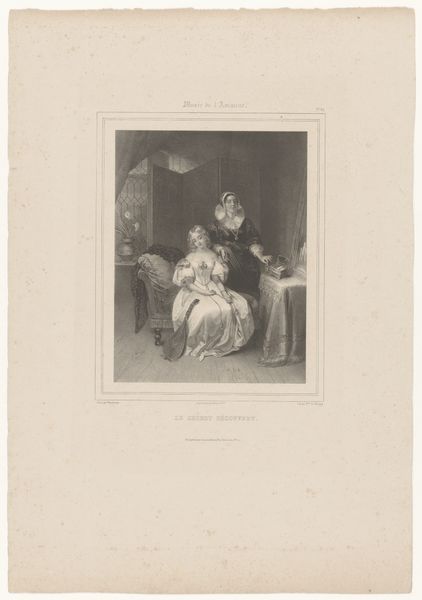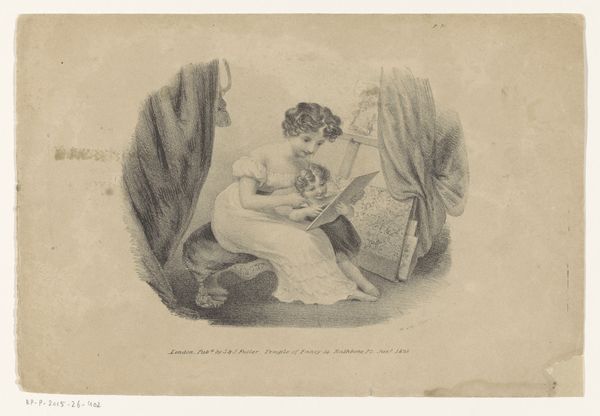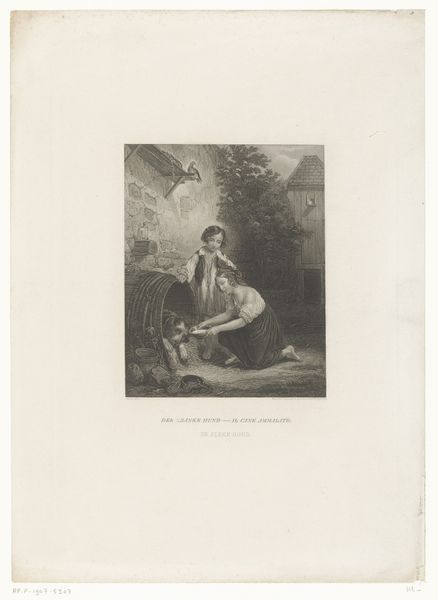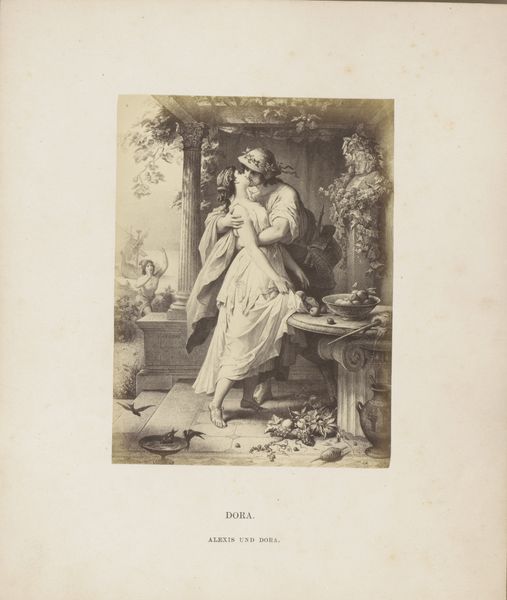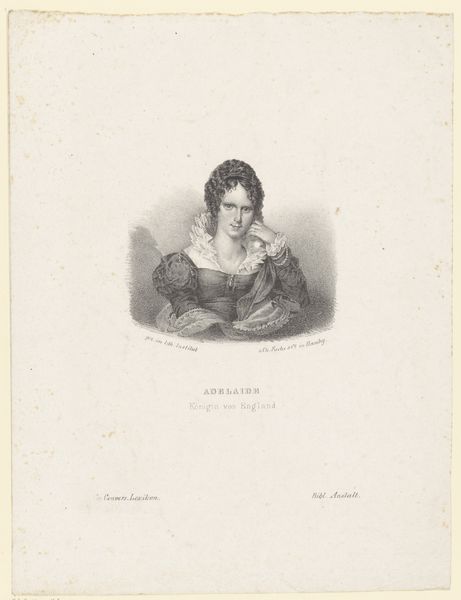
print, paper, ink, engraving
#
narrative-art
#
ink paper printed
# print
#
old engraving style
#
figuration
#
paper
#
ink
#
romanticism
#
history-painting
#
engraving
Dimensions: height 154 mm, width 120 mm
Copyright: Rijks Museum: Open Domain
Curator: This engraving, titled "Jong koppel in een gevangenis," which translates to "Young Couple in a Prison," dates from 1817 to 1866 and is the work of Charles Cousin. The print is made from ink on paper using the engraving technique. Editor: It strikes me as surprisingly tender. Even in monochrome, the way the artist plays with light and shadow conveys a certain intimacy within the stark confines of what I presume to be a prison setting. Curator: Precisely. Cousin uses the stark contrasts afforded by the engraving to direct our focus. Notice the placement of the couple in the composition—centrally located and bathed in light—against the rougher texture of the prison wall and other elements pushed into the shadows. This formal decision isolates them in their embrace, making their connection the focal point. Editor: The title places the characters within a history or period narrative of knights and chivalry, inviting discourse regarding power, social constraints, and the individual within larger societal frameworks. Are they imprisoned by circumstance, love, or a societal decree? Curator: Interesting question! The medium of print and the period, somewhere within Romanticism, suggest it likely circulated fairly widely and would have triggered multiple, sometimes contradictory readings about freedom and constraint among viewers. The diagonal lines created by their forms provide tension, contrasting to the heavy verticals and horizontals representing the imprisonment space, thus evoking imprisonment and the romantic moment simultaneously. Editor: Exactly. There is something about their closed eye embrace that shuts out a reality perhaps too awful to consciously accept. It prompts the questions of what constitutes freedom. What do love and resistance look like within institutional boundaries? It also prompts a gender analysis in a time period where patriarchal structures confined women, how might their status contribute or complicate our understanding of freedom? Curator: I concede to your viewpoint, since the artwork doesn’t dictate a unique viewpoint; rather, its enduring quality relies on an interpretation. Cousin masterfully juxtaposes shadow and light, but also societal expectations and private emotions— Editor: —revealing a deeply nuanced tension in which both formal qualities and our historical contextualization produce new layers of understanding. Thank you! Curator: Thank you.
Comments
No comments
Be the first to comment and join the conversation on the ultimate creative platform.


